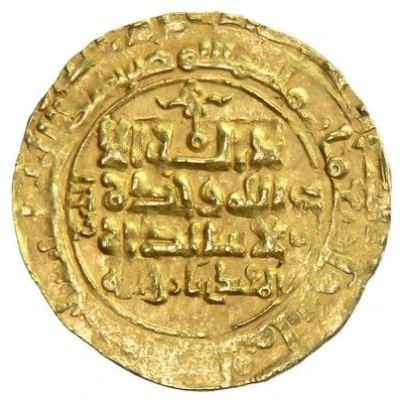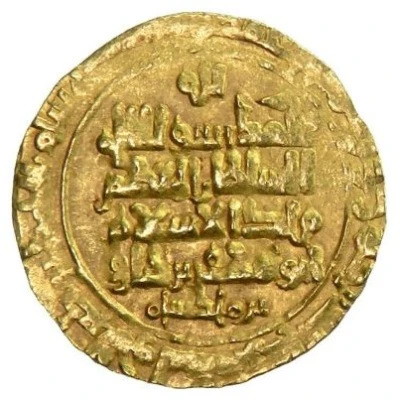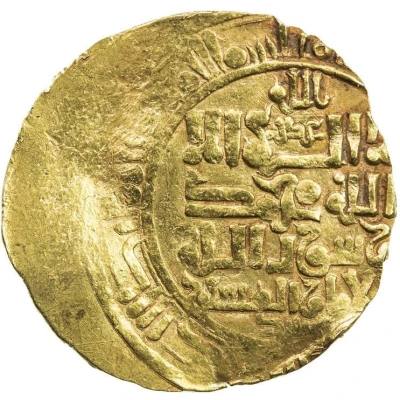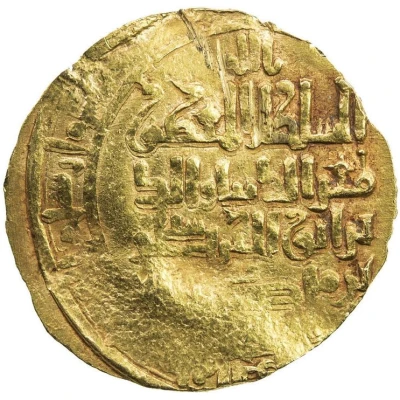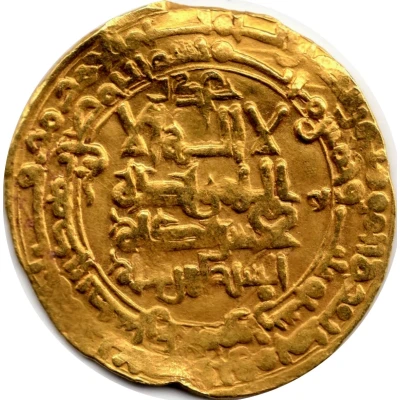
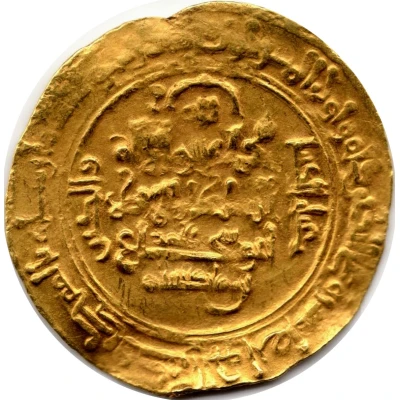

© Blake S
Dinar - Muhammad I al-Ahwaz
| Gold | 4.3 g | 25 mm |
| Issuer | Great Seljuq |
|---|---|
| Sultan | Muhammad I Tapar (1105-1118) |
| Type | Standard circulation coin |
| Years | 499-511 (1099-1118) |
| Calendar | Islamic (Hijri) |
| Value | 1 Dinar |
| Currency | Dinar (628/632-1598) |
| Composition | Gold |
| Weight | 4.3 g |
| Diameter | 25 mm |
| Thickness | 0.7 mm |
| Shape | Round (irregular) |
| Technique | Hammered |
| Orientation | Coin alignment ↑↓ |
| Demonetized | Yes |
| Updated | 2024-10-05 |
| Numista | N#368863 |
|---|---|
| Rarity index | 97% |
Reverse
Kufic inscription, enclosed in circle. One marginal legend outside.
Script: Arabic (kufic)
Lettering:
محمد رسول الله
غیاث الدنیا و الدین ابو شجاع محمد
Translation:
Muhammad is the Messenger of God
Help of the World and of the Faith, Abu Shuja Muhammad
Edge
Plain
Comment
Muhammad I of the house of Seljuq, more commonly known as Muhammad I Tapar, reigned from 1099 to 1118AD (499-511H) as sultan of the Seljuq Empire. Considered one of the last strong rulers of the empire, following Muhammad's death the Seljuq empire would enter a decline and eventually be supplanted by the Khwarazmian Empire in less than a century.Gold coins (Dinars) struck by the Great Seljuqs in mints west of Nishapur, including al-Ahwaz, are of fine gold of high purity. Dinars struck east of Nishapur are of debased gold (so called "pale-gold"), with purity as low as 10%-20%. Weights of Dinars varied greatly under the Seljuqs, there seemed to be no standard weight or designs across mints. The strike was often poor and flans uneven, especially under later rulers. Source page 186.
Interesting fact
One interesting fact about the Standard circulation coin Dinar - Muhammad I (al-Ahwaz) 499-511 (1099-1118) from Great Seljuq made of Gold weighing 4.3 g is that it features an intricate design that reflects the cultural and artistic influences of the time. The coin's obverse side features an inscription in Arabic that reads "Muhammad, the Commander of the Faithful," while the reverse side features an image of a lion, which was a symbol of power and strength in the Seljuq Empire. The coin's design also includes intricate floral patterns and geometric shapes, which were characteristic of the art and architecture of the period. Overall, the coin's design reflects the rich cultural heritage of the Great Seljuq Empire and its significance in the history of Islamic art and architecture.
